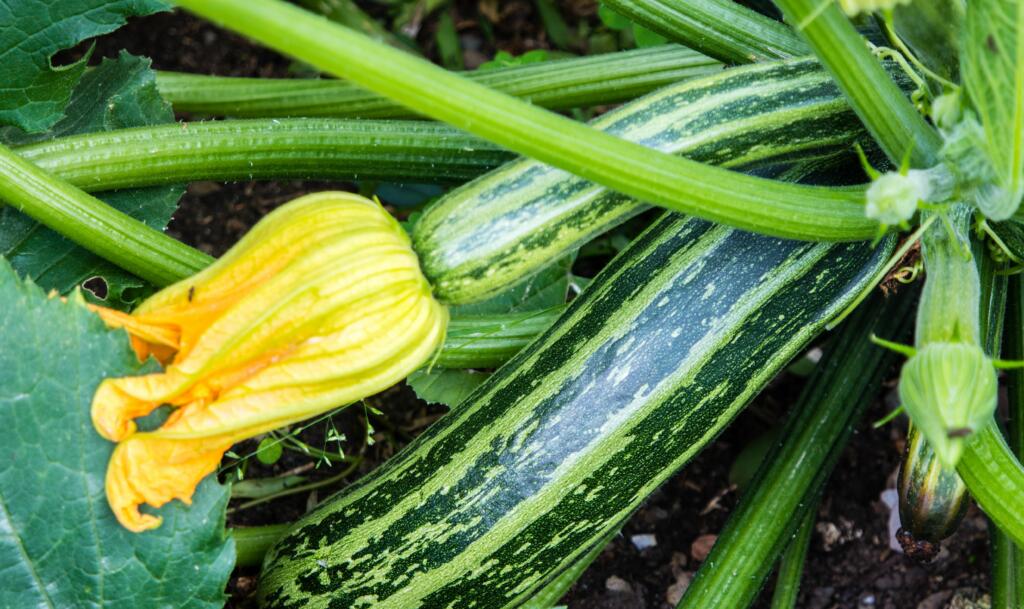
How to grow courgettes, with expert tips
Camilla Sharman
Here’s how you can turn your germinating seeds into crunchy salad treats in just one month.
Creating your own kitchen garden doesn’t have to be complicated. At Exceptional we love any opportunity to reap the rewards of low-maintenance garden flowers and plants – and radishes are no exception. If you’ve been watching your veg patch flourish and are wondering when to harvest radishes, we’re here to help.
Though radishes are relatively easy to look after, getting the harvesting time right is important for flavour and texture. Leave them in the ground too long and they become inedible.
To avert such catastrophes and make sure you can enjoy them at their best, we’ll share some expert advice so you know exactly how and when to harvest radishes in your kitchen garden.
Creating your own kitchen garden doesn’t have to be complicated. At Exceptional we love any opportunity to reap the rewards of low-maintenance garden flowers and plants – and radishes are no exception. If you’ve been watching your veg patch flourish and are wondering when to harvest radishes, we’re here to help.
Though radishes are relatively easy to look after, getting the harvesting time right is important for flavour and texture. Leave them in the ground too long and they become inedible.
To avert such catastrophes and make sure you can enjoy them at their best, we’ll share some expert advice so you know exactly how and when to harvest radishes in your kitchen garden.
 Credit: Shutterstock / Marina.Martinez
Credit: Shutterstock / Marina.MartinezRadishes are hardy and can be planted outside once persistent freezing conditions have passed (though they can tolerate very cold weather and even a light frost).
If you keep sowing radishes in small batches between February and August, you can harvest them regularly year round.
“Radishes grow quickly and are best harvested young,” explains Chris Bonnett, founder of plant supplier Gardening Express.
“The small summer radishes are generally ready three to four weeks after planting, whereas winter radishes are larger and take around eight to ten weeks to ripen.”
Bonnett warns that it’s important to avoid leaving summer radishes in the ground for too long as they can become bitter when overripe. Harvesting them at the right time will ensure they’re a delicious, crunchy addition to the salad bowl, he says.
Winter radishes differ to salad radishes because “they can be left in the ground to grow larger and juicier for as long as you like”, according to Bonnett. “Just make sure to keep an eye on the weather forecast and pull them out before the ground freezes.”
The Royal Horticultural Society (RHS) suggests harvesting winter radishes in November and storing them in a fridge or similarly cool place. “Protect roots left in the ground with fleece or cardboard in freezing weather,” it adds.
 Credit: Shutterstock / Miriam Doerr Martin Frommherz
Credit: Shutterstock / Miriam Doerr Martin FrommherzBecause knowing when to harvest radishes is so important for the best taste and texture, there’s a quick test to see if the time is right.
“To check if summer radishes are ready, you can remove soil from the top of one and examine its size,” says Bonnett. “Mature crops should be around 2.5cm (1in) in diameter.”
Gardener and broadcaster David Domoney says on his website that this is the same size as a 10p coin, which is a really simple visual cue to assess whether your radishes are ready to be plucked from the soil.
Growing radishes indoors
“Radishes can be grown indoors all year round if you provide them with the right conditions,” explains Bonnett. “During winter you need to grow them on a sunny windowsill or use a heated propagator. And when the temperatures go up in the summer, it’s important to remember to water the plants more thoroughly.”
 Credit: Pexels / Karolina Grabowska
Credit: Pexels / Karolina GrabowskaSalad radishes are, of course, excellent in a salad. But did you know that their green leaves are just as delicious?
“You can incorporate them into salads and sandwiches, make fresh pesto and green smoothies, or add them to soups and stews,” Bonnett tells us.
Bonnett adds that winter radishes are “milder and sturdier, making them ideal for soups, stir-fries and stews”.
The RHS warns that some varieties of winter radish can be hot, so advises people to check their packets of seed for details.
“The roots can also be eaten raw, sliced or grated in salads,” the organisation says. “The leaves can be eaten and have a peppery flavour when raw, or can be cooked in a similar way to chard.”
Did you know?
The weather can impact the flavour of radishes: “If you grow radishes in hot weather, they have a hotter, more peppery taste,” says Domoney. “They taste milder when grown in mild weather.”
 Credit: Shutterstock / Lahore Qalandars7
Credit: Shutterstock / Lahore Qalandars7Domoney has shared a trick on his website that will help you save radish seeds for sowing next year.
He advises that gardeners leave a couple of plants in the ground to flower and produce a seed pod.
“Collect the seed pods while they are still young and green, then dry them indoors before removing the seeds from the pods,” he adds. That’s one less packet of seeds you’ll need to put on your buying list for the following year.
Other types of radishes
As well as salad and winter radishes, other cultivars are available to UK gardeners.
Oriental radishes (also known as Japanese, daikon or mooli radishes, according to the RHS) usually produce a long, white, tapered root. These can be harvested from late summer into the autumn.
“They are slow growing, taking at least eight weeks to mature, but can reach lengths of 30cm (1ft) or more,” according to the RHS. “Usually, they have a mild flavour and last well in the ground without turning woody. Eat them raw or cook them in a similar way to winter radishes.”
Some types of radish are grown for their edible seed pods. The RHS advises you pick the long, pointed pods when young: “They are crisp and peppery, great for adding to salads and stir-fries. If left on the plant too long, the pods turn stringy and inedible, and flowering will stop if the pods aren’t picked regularly.”
You can pick off overripe pods to encourage more fresh ones to come through.

Written by Rosanna Spence she/her
Published: Updated:
Rosanna Spence has been a journalist for nearly 10 years, reporting on a huge array of topics – from microwaves to cocktails, sustainable buildings, the Caribbean islands and beyond. She’s interviewed chefs at the helm of Michelin-starred restaurants and chatted to countless CEOs about their businesses, as well as created travel guides for experienced travellers seeking life-changing adventures. Throughout her career, she has created content for Business Traveller, i-escape.com, Pub & Bar, BRITA, Dine Out and many more leading titles and brands.